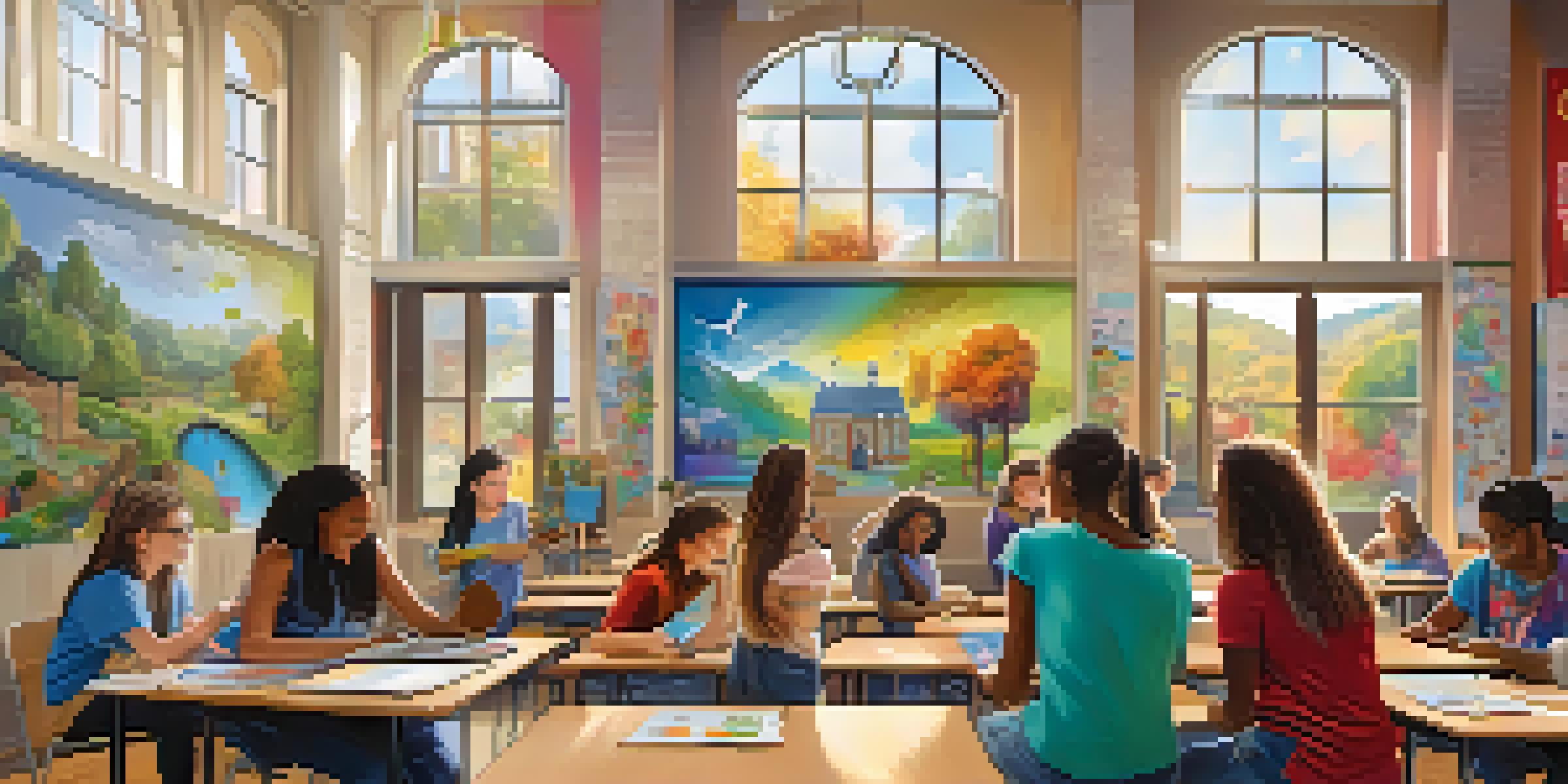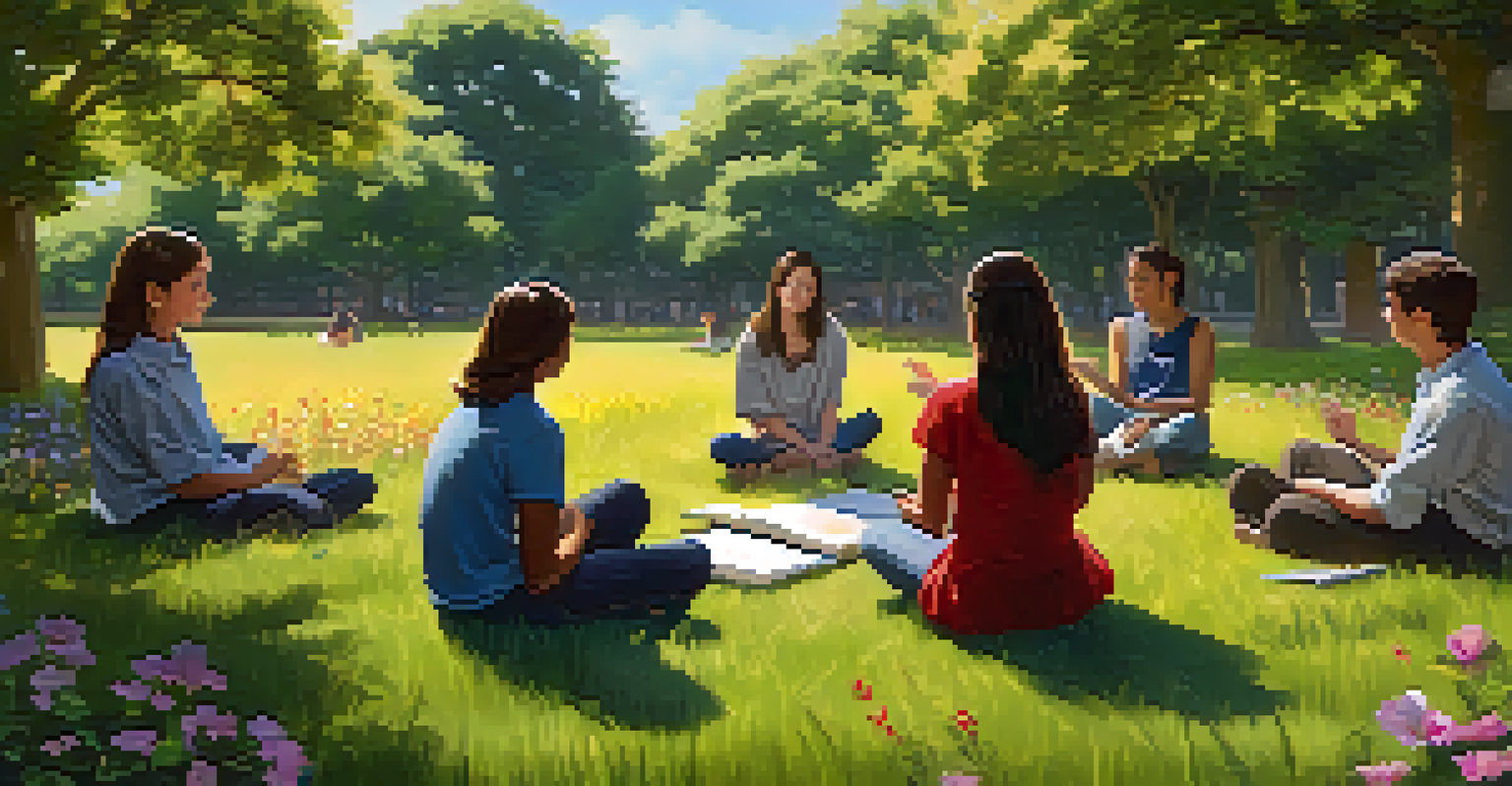Artistic Expression: The Importance of Creativity in Learning

Understanding Artistic Expression in Education
Artistic expression encompasses various forms of creativity, including visual arts, music, theater, and writing. It serves as a powerful tool in education, allowing students to explore their thoughts and feelings in unique ways. By integrating artistic expression into learning, educators can foster an environment that encourages exploration and innovation.
Every artist was first an amateur.
For instance, a student who struggles with traditional methods may find solace in creating a visual project that represents their understanding of a concept. This not only enhances their grasp of the subject but also boosts their confidence. The beauty of artistic expression lies in its ability to make learning personal and relatable.
Moreover, when students engage in creative activities, they develop essential skills such as problem-solving, critical thinking, and collaboration. These skills are not only vital for academic success but also for navigating the complexities of life beyond the classroom.
The Link Between Creativity and Cognitive Development
Creativity plays a significant role in cognitive development, influencing how students process and retain information. Engaging in artistic activities stimulates different parts of the brain, promoting neural connections that enhance learning. This means that creative tasks can lead to improved memory recall and deeper understanding of material.

Consider a scenario where students learn about historical events through creative storytelling. By crafting narratives, they actively engage with the content, making it more memorable and meaningful. This method not only aids retention but also encourages empathy, as students step into the shoes of historical figures.
Art Enhances Learning and Confidence
Incorporating artistic expression in education allows students to engage with material creatively, boosting both their understanding and self-esteem.
Furthermore, creativity encourages a growth mindset, where students learn to view challenges as opportunities for growth. This mindset fosters resilience, allowing them to tackle academic hurdles with confidence and innovation.
Encouraging Creative Expression in the Classroom
To harness the benefits of creativity, educators must create an environment that encourages artistic expression. This can be achieved by providing diverse materials, allowing for open-ended projects, and promoting collaboration among students. When students feel safe to express themselves, they are more likely to take risks and explore new ideas.
Creativity is intelligence having fun.
For example, a simple art project can turn into a collaborative mural that represents the class's collective vision. Such projects not only foster teamwork but also allow students to appreciate each other's perspectives, enhancing their social skills. The classroom becomes a vibrant space where creativity thrives.
Additionally, incorporating technology can further enrich artistic expression. Digital tools such as graphic design software and music production apps can open doors to new forms of creativity, appealing to a wider range of students and learning styles.
The Role of Artistic Expression in Emotional Well-being
Artistic expression is not only crucial for cognitive development but also plays a significant role in emotional well-being. Engaging in creative activities allows students to process their emotions, express themselves freely, and cope with stress. This emotional outlet is essential, particularly in today's fast-paced world.
For instance, students may find it challenging to articulate their feelings verbally, but through art, they can convey their emotions in a way that feels comfortable. Whether it's through drawing, painting, or writing, these creative outlets provide a safe space for self-expression.
Creativity Fosters Emotional Health
Engaging in artistic activities provides students with a vital emotional outlet, helping them process feelings and cope with stress.
Moreover, when students see their work valued and appreciated, it boosts their self-esteem and sense of belonging. This positive reinforcement can lead to a healthier emotional state, fostering resilience and happiness in the learning environment.
Creativity and Collaboration: A Perfect Match
Creativity flourishes in collaborative environments, where students can exchange ideas and build on each other's strengths. Group projects that involve artistic expression encourage teamwork, communication, and collective problem-solving. These experiences teach students the value of diverse perspectives and the power of working together.
Imagine a scenario where a group of students collaborates on a play. Each member brings their unique talents to the table—writing, acting, designing costumes—which not only enhances the final product but also fosters a sense of community. Through collaboration, they learn to appreciate the contributions of others and develop essential interpersonal skills.
By prioritizing collaborative creative projects, educators can prepare students for real-world situations where teamwork and creativity are paramount. This approach cultivates a culture of innovation and mutual respect within the classroom.
Real-World Applications of Creative Learning
The skills developed through artistic expression and creativity extend far beyond the classroom. In today's job market, employers increasingly value creativity and innovative thinking. By nurturing these skills in students, we prepare them for success in a rapidly changing world.
For instance, industries such as technology, marketing, and design rely heavily on creative problem-solving. Students who have engaged in artistic expression are more likely to approach challenges with fresh ideas and unique solutions. This adaptability is crucial in a competitive landscape.
Collaboration Sparks Innovation
Group projects that involve artistic expression teach students the value of teamwork and diverse perspectives, essential for real-world success.
Moreover, creative learning experiences can spark interest in various career paths. A student who discovers a passion for graphic design through a classroom project may pursue it as a lifelong career, illustrating how creativity can shape futures.
Conclusion: Embracing Creativity in Education
In conclusion, artistic expression is a vital component of effective learning. It enhances cognitive development, emotional well-being, and essential life skills, preparing students for both academic and real-world challenges. By prioritizing creativity in education, we can cultivate a generation of innovative thinkers and compassionate individuals.
As educators, parents, and community members, we must advocate for an educational system that values and nurtures creativity. This includes supporting arts programs, encouraging creative projects, and creating spaces where students feel free to express themselves.

Ultimately, embracing creativity in education is not just about teaching art; it's about fostering a holistic approach to learning that empowers students to thrive in all aspects of life.